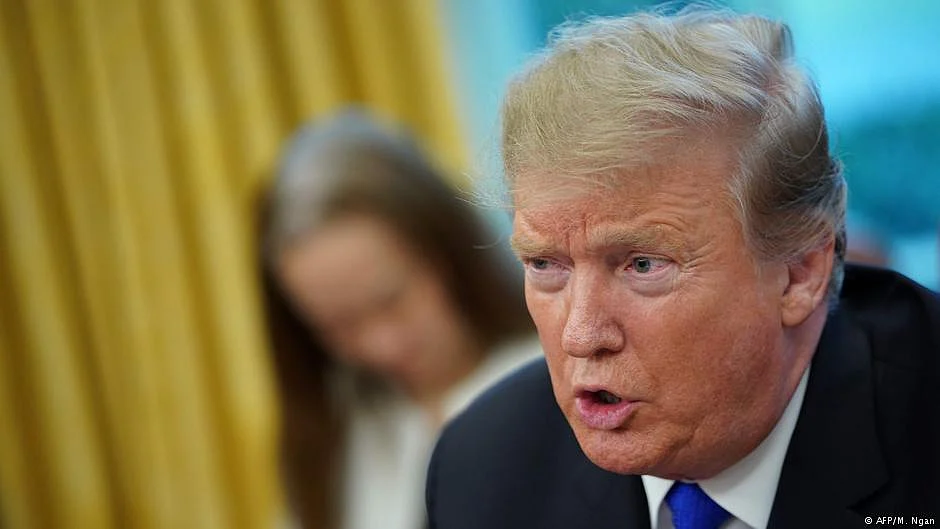Business
Trump’s tariff policy: Investor confidence takes a hit
India’s analysts and businesses remain cautious about potential future tariffs

Benchmark Indian equity indices closed lower on Thursday, 3 April, as investors reacted to US president Donald Trump’s newly announced tariff structure, which imposes a 26 per cent tariff on Indian exports.
The move, part of a broader trade policy shift, introduced a baseline 10 per cent tax on all US imports, with higher tariffs targeting countries running a trade surplus with the US.
The BSE Sensex declined by 322.08 points, or 0.42 per cent, to settle at 76,295.36, after fluctuating between 76,493.74 and 75,807.55. Similarly, the NSE Nifty50 ended at 23,250.10, down 82.25 points or 0.35 per cent.
Technology stocks bore the brunt of the sell-off, with TCS, HCL Tech, Tech Mahindra, Infosys and Tata Motors suffering losses of up to 4.02 per cent.
Published: undefined
Conversely, the Power Grid Corporation, Sun Pharma, Ultratech Cement, NTPC and Asian Paints emerged as the session’s top gainers, rising by as much as 4.57 per cent.
Sectoral and market trends
The Nifty IT index was the worst-performing sector, plunging 4.21 per cent due to pressure on major players such as Persistent Systems, Coforge, TCS, and Mphasis. Auto, Oil & Gas, and Realty stocks also faced headwinds, while the Pharma sector bucked the trend, gaining over 2.25 per cent as investors sought safe-haven bets. Banking, healthcare, FMCG, and consumer durables sectors saw moderate gains of up to 1.94 per cent.
Despite broader market weakness, small-cap stocks outperformed, with the Nifty Smallcap100 index climbing 0.58 per cent.
Published: undefined
Pharma industry’s mixed response
Indian pharmaceutical exports escaped an immediate impact, as the US administration exempted the sector from the latest tariff hikes.
Given India’s status as a major supplier of generic drugs to the US —exporting approximately USD 8 billion worth of pharmaceutical products in FY24 — this exemption was welcomed by industry stakeholders.
However, analysts remain cautious about potential future tariffs.
Published: undefined
“While there is a moment of relief for the Indian pharmaceutical sector, future tariff considerations remain a possibility. If imposed, they could significantly disrupt price competitiveness and profitability,” said Arvind Sharma, partner at Shardul Amarchand Mangaldas & Co.
He suggested that Indian pharma firms diversify their export markets to Latin America, Europe and Africa to mitigate risks.
Technology and auto sectors braced for impact
With the US market being a major revenue source for Indian IT firms, experts predict that the latest tariff announcement, coupled with macroeconomic uncertainties, may weigh on upcoming earnings.
“We anticipate a sequential revenue decline for large Indian IT service firms due to seasonality, fewer billing days, and softening demand,” said Sumit Pokharna, vice president - fundamental research, at Kotak Securities.
The auto industry also faces challenges, with a 25 per cent tariff increase on vehicle and component exports threatening competitiveness in the US market.
“This presents an immediate hurdle but also an opportunity to strengthen our footprint in Europe, Latin America and Southeast Asia,” said Nikhil Anand Khurana, MD and CEO of Folks Motor.
Published: undefined
In general, industry leaders emphasised the importance of diversifying export strategies and enhancing domestic supply chains to offset losses.
Samrath Singh Kochar, Founder and CEO of Trontek, noted that while the electric vehicles sector could face short-term disruptions, the shift may ultimately encourage greater self-reliance in battery technology and boost local production.
Textiles and jewellery caught in the crossfire
Textile stocks fared better than other sectors, as India’s competitive position improved against Asian peers facing higher US tariffs.
Published: undefined
However, the gems and jewellery industry is grappling with uncertainty.
With the US accounting for nearly 28 per cent of India’s exports in this segment, the newly imposed 26 per cent tariff could significantly impact profitability. “The industry already operates on thin margins of 5–8 per cent and the increased tariffs could erode price competitiveness, particularly in premium segments,” said Akshat Garg, AVP of research at Choice Wealth.
Published: undefined
Looking ahead
While Indian exporters face immediate challenges, some analysts see opportunities in shifting global trade dynamics. Electronics exports, for instance, could gain an edge as China and Vietnam contend with even steeper tariff hikes.
Meanwhile, policy measures such as India’s production-linked incentive (PLI) scheme and domestic manufacturing initiatives could help industries adjust to the new trade landscape.
As Indian businesses navigate these changes, the coming days and months will be crucial in determining whether alternative markets and policy shifts can help offset the impact of US trade barriers.
Published: undefined
Follow us on: Facebook, Twitter, Google News, Instagram
Join our official telegram channel (@nationalherald) and stay updated with the latest headlines
Published: undefined